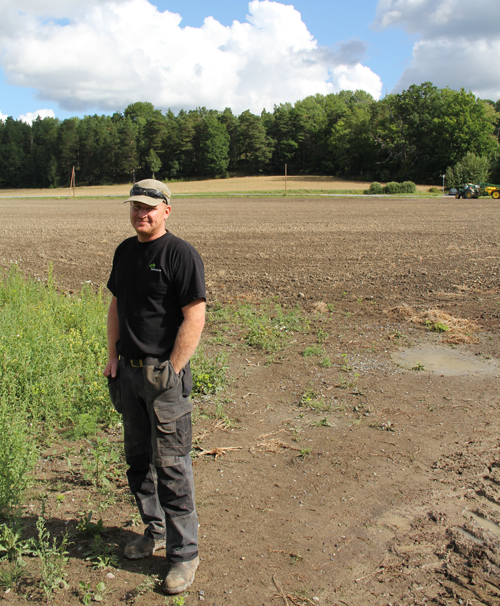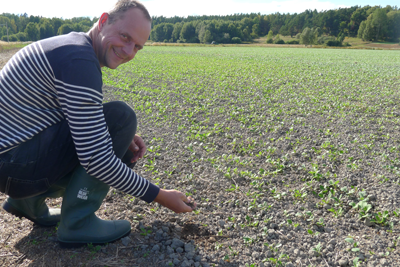Living coast: Structure liming reduces the leakage of nutrients to Björnöfjärden
Author: BalticSea2020Year published: 2014
Structure liming is one of the measures within the program Living coast. The measure is used in the field at Säby Säteri and is implemented to reduce leakage of nutrients from the field to Björnöfjärden.

Micke the farmer demonstrates the field after the structure liming. Photo: Emil Rydin.
What is structure liming?
Liming structure is suitable for clay soils, which are common in east of Sweden. They use hydrated lime and the goal is to get a stabilized clay structure formed by calcium ions. This structure improvement means that phosphorus bound better in the mud and the soil structure becomes more porous. This reduces the loss of nutrients and particles from the soil, clay soil holds together better and do not crack so easily. It also leads to the plant roots more easily reach into the ground and get better water and nutrient supply. Structure liming may thus contribute to both harvests as well as reducing the leaching of nutrients from the soil to water streams.

Limestone. Photo: Linda Kumblad.

A structure liming has been implemented in the field. Photo: Linda Kumblad.
For more information, visit the “Greppa Näringen” website, www.greppa.nu.(In Swedish.)
A range of measures are implemented within the program Living coast, both on land and in the water, to reduce nutrient losses to Björnöfjärden, in the Stockholm archipelago. Other agricultural measures within the program include the establishment of settlement ponds with lime filter and a wetland, which also reduces the leaching of nutrients from the fields at Säbyviken. Click here and learn more about our projects and activities within the project Living Coast.










